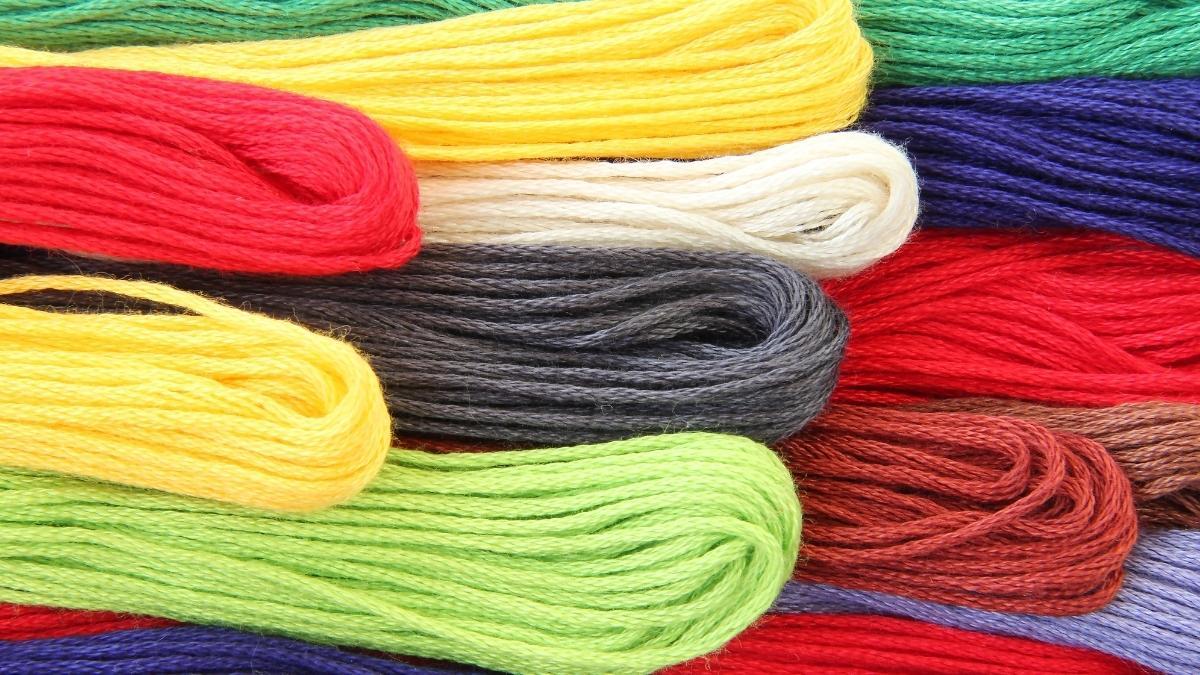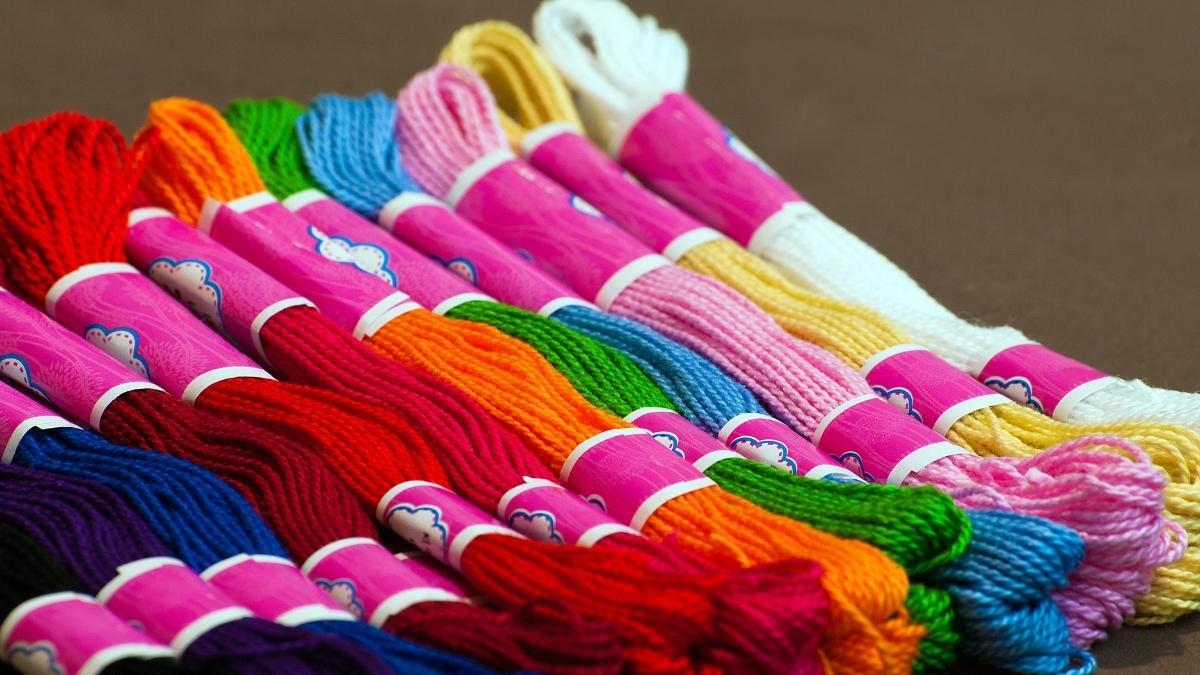
Crochet is one of the most diverse fiber arts for a few reasons. A primary reason is that you can crochet with pretty much any material at nearly any size to do unique projects. Crocheting with embroidery floss is no different than with regular yarn. It simply means that your stitches (and most likely your finished pieces) will be smaller.
In this article, I’ll teach you how to crochet with embroidery floss, why you might want to give it a try, and give you some ideas for what you can make with this shiny, vibrant thread.
In a hurry? Here’s the quick guide:
To crochet using embroidery floss, use a 1 or 2mm hook to work your stitches as usual. To keep your stitches small and condensed, use a 1mm hook or below. You can use a bigger hook for looser stitches if you want a lacier-looking piece.
If you already know how to crochet, embroidery floss for your pieces won’t look much different. However, if you’re learning or interested in the kinds of projects you can complete with this unique medium, keep reading for project suggestions and instructions.
Crocheting With Embroidery Floss

To crochet with embroidery floss, make a slip knot on your hook. Pull the yarn through the loop. Do this several times to make a chain. Insert your hook into the second chain, pull up a loop, yarn over, and pull through both loops.
While crocheting with a single piece of embroidery floss can make small or dainty projects, you can also add embroidery floss to your yarn by crocheting with both strands to create a unique, colorful, and textured look.
However, crocheting with this medium on its own is no different than crocheting with regular yarn or thread. If you’re an absolute beginner, I’ll go through a quick tutorial on doing a basic single crochet stitch used for keychains, bookmarks, amigurumi, and more.
You’ll make a slip knot to put on your hook to start. To do this, create a loop that looks like a fish. Pull your working thread (the thread attached to the ball) through this loop and tighten it over the hook.
Hold your floss in your non-dominant hand to make a semi-tight line between your hand and the work in progress. Wrap your hook around this thread to grab it with the hook, then pull it through the existing loop. Do this again and again until you’ve reached the number of chains you need.
When you’re ready to start the next row, insert your hook into the second chain from the hook. Wrap your hook around the working thread again and pull it back through to the front. Then, wrap the thread around the hook again and pull it through both loops.
Is Embroidery Floss The Same As Crochet Embroidery Thread?

Embroidery floss is six strands of embroidery thread wound together, and as loosely wound cotton, they come apart easily. This means it may not be as structurally sound or easy to work with as typical yarn and maybe more suited to smaller projects.
If you’re a beginner, you may not be fully aware of how the medium, down to the material of the yarn you use, can change the way a piece comes together. For example, it’s not typically a good idea to use 100% cotton yarn for t-shirts. It makes the piece heavy, and it doesn’t drape well.
The drape is an essential part of the way a wearable fits. Ideally, it drapes comfortably over the body and looks ordinary, not stiff. The stiff drape may happen with worsted weight acrylic yarn that is rough to the touch.
Embroidery floss with a small hook is not going to drape nicely. This means projects that need to be stiff, like headbands, purses, baskets, etc., would work great with this kind of thread and a tiny hook. Embroidery floss with a big hook would make bigger holes between stitches. This would be great for lacy doilies, fringe borders, or bags. This would also give an item a better drape.
Best Hook Size For Crocheting With Embroidery Floss

Just like with yarn, there are different sizes of embroidery floss. The thicker the floss, the bigger the hook size you’ll need. For bigger sizes, 3 and 5 flosses, somewhere between a size 1 or 2mm hook should suffice. For smaller 8 or 12 threads, use a .40 or .60mm hook.
When in doubt, your pattern should give you an idea of the best hook size to create the desired look. For example, in this miniature embroidery amigurumi pattern, the author suggests a .40 mm hook for a small sheep and a 1 mm hook for a big sheep.
Embroidery floss hook size is a complex topic, but I’ll try to answer it as precisely as I can.
For tight, rigid stitches often used in crochet amigurumi, use a small .40 or .60mm crochet hook. Use a more significant 1 or 2mm crochet hook for loose stitches with better drapes. Using thicker thread with smaller hooks makes the stitches even more rigid. Using smaller thread with bigger hooks makes the stitches even looser and lacey.
You might have to mix and match on your own to see what your project requires and what look you like best!
What To Make Out Of Embroidery Floss

Embroidery floss is, on average, about the size of fingering weight yarn, meaning around a 2 in typical yarn. However, the thread that makes up the floss is very loosely wound and silky, meaning it may be challenging to work with, will split often, and may not hold its shape.
However, that doesn’t necessarily mean you’re limited in what you can do.
Here are some of the projects best suited for crocheting with embroidery floss:
- Amigurumi / Toys
- Baskets
- Headbands
- Jewelry
- Doilies
- Appliqués
- Bookmarks
- Keychains
I’ll leave two patterns that show the differences in drape between projects with small threads to get you started. Stiff drape can be seen in this tiny crochet octopus pattern.
For something a bit lacier and more delicate, you could try your hand at this headband pattern. To keep the same gauge, you may need to double up on your embroidery floss and crochet with two strands at once or use one strand to make it even looser.
As a final note, you should know that larger, longer crochet projects can be done with thread this thin, but it may make you wish you hadn’t started if your yarn starts splitting and breaking.
Conclusion
Hopefully, at the end of this article, you’ve got an understanding of the differences between more common crochet mediums and embroidery floss. The projects you can do with it are still plentiful, and working up a piece is no different than your regular crochet! Just smaller.
Originally posted 2022-07-06 11:50:19.
